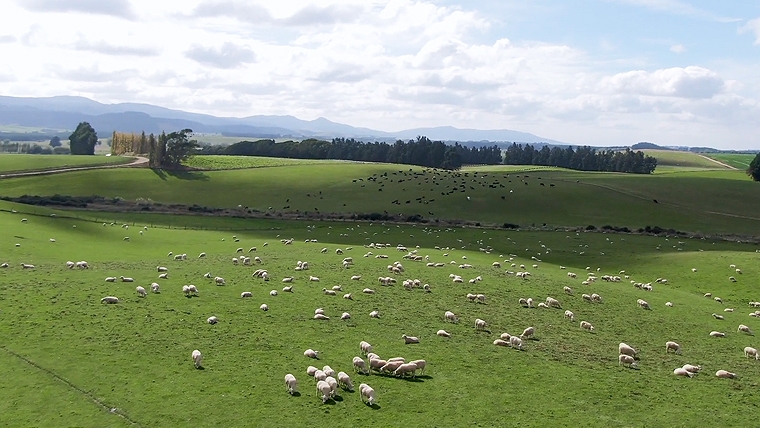
The red meat sector has with some justification been blamed over the years for taking a shortsighted approach to market development and competition. In recent years exporter processors have worked constructively with their supplier base to improve understanding of the product standards and specifications the customer expects and is prepared to pay for.
At the same time the companies have cooperated with each other to ensure farmers have the same farm assurance programme across different processors, replacing paper documents with electronic forms and common data entry requirements.
The NZ Farm Assurance Programme has been operating in one form or another for over 30 years, but has gained enormous momentum since the formation of the Red Meat Profit Partnership which was a joint Primary Growth Partnership initiative between the red meat sector and MPI, with Beef + Lamb NZ taking the lead in coordinating the programme on behalf of farmers. New Zealand Farm Assurance Incorporated was formed in 2021 to own and operate NZFAP and NZFAP+ as voluntary programmes that have the stated purpose of providing customers worldwide with confidence in the authenticity and safety of New Zealand grown meat and wool. Certain markets now require accreditation to NZFAP, while NZFAP+ remains an entirely voluntary programme.
Nearly 9,000 farms are now accredited to NZFAP which guarantees production to specified standards of origin, traceability, food safety and animal welfare.
NZFAP+ began three years ago and is designed to build on those criteria with the introduction of a set of environmental, social and biosecurity standards which are especially relevant to larger properties with a focus on quality over quantity. While the majority of farms are now audited for compliance with the NZFAP standards, a much smaller percentage are participants in the more demanding, higher level NZFAP+ programme.
The establishment and governance of NZFAI has been a great example of cooperation in an industry which has traditionally not been noted for that particular quality. As Greg McSkimming, Silver Fern Farms’ Strategic Business Manager, notes “processors leave their company brand at the door” when they come together to discuss how best to proceed. One very significant feature is that the cost of the programmes is borne proportionately by the participating members, not by the farmers who sign up to be part of the audit scheme. This single fact explains why uptake has been so impressive.
A notable example of progress has been the decision to set up a membership structure which provides for a broad range of members, including not only meat processors, but also wool companies, software providers and catchment groups, all with the capacity to communicate with their farmer clients and members.
Last year the management committee made the decision to engage QCONZ as the programme auditors because of their track record with the dairy industry and their ability to increase the speed and efficiency of the audit process. Their systems and data management expertise has made the whole compliance process for farmers quicker and easier. The QCONZ farm audits are in turn monitored and audited by JASANZ which is a not-for-profit trans-Tasman accreditation body certified to international standards.
McSkimming and ANZCO’s Grant Bunting are at pains to point out neither NZFAP nor NZFAP+ is designed to comply with regulatory standards and non-tariff barriers which are applied in many markets, although they may on occasion provide proof of compliance. Compulsory regulations are a separate trade access issue which remains the responsibility of government agencies to negotiate on New Zealand’s behalf, although B+LNZ and MIA provide advice.
ANZCO’s position is for NZFAP and NZFAP+ audits to be as relevant as possible to market requirements, citing a reluctance to progress beyond this in case an unnecessarily demanding standard becomes part of the access regulations. Bunting says it is preferable to evolve slowly instead of getting ahead of an acceptable pace of change on farm and makes the point the assurance programme has a value to ensure market access, but does not yet carry a premium. However in time the assurance programmes will enhance New Zealand’s country brand which will provide the opportunity to achieve a higher value from which all farmers can benefit.
McSkimming emphasises the processors are not the regulators, but want to set meaningful standards which enable farmers to meet market requirements. This helps processors to procure livestock that achieves this goal with NZFAI providing a neutral environment for compliance with a designated set of standards.
Silver Fern Farms is looking to the farm assurance programmes to futureproof meat supply that keeps up with market trends and satisfies customer requirements in the first place. The longer term goal is to find ways to unlock greater value which can be shared with suppliers. As part of the company’s commitment to achieve this, SFF has five staff dedicated to working with farmers to comply with NZFAP standards. The ultimate objective is to target quality over quantity with a focus on larger properties.
There is no doubt NZFAP and NZFAP+ have already resulted in an improvement in livestock quality with the ability to meet market specifications, while providing assurance on such critical factors as traceability, food safety, animal welfare and, progressively, environmental management and biosecurity. It is particularly heartening that an initiative of increasing benefit to the reputation and value of our red meat and wool exports has been driven from within the sector instead of by external consultants. Sometimes the best ideas start with those who know their industry.
Current schedule and saleyard prices are available in the right-hand menu of the Rural section of this website.

We welcome your comments below. If you are not already registered, please register to comment
Remember we welcome robust, respectful and insightful debate. We don't welcome abusive or defamatory comments and will de-register those repeatedly making such comments. Our current comment policy is here.